Otoplasty
Boston, MA
Introduction to Otoplasty
The projection of one’s ears can be a very sensitive subject. It can lead to teasing, name-calling, and eventually, insecurities and problems with self-image. At the offices of Vickram Tandon, MD in Boston, Massachusetts, we offer Otoplasty as a safe and effective way to treat protruding ears and attached earlobes for patients of all ages. To learn more about this procedure and determine if it’s right for you, please continue reading below.
What Is Otoplasty?
Otoplasty or ear contouring is a plastic surgery procedure commonly used to correct ears that appear to be too big or stick out. This procedure can potentially help patients to overcome their self-consciousness about this aspect of their appearance.

Ear Contouring Surgical Techniques
The most common type of Otoplasty is ear pinning, a minimally-invasive procedure that will draw protruding ears closer to the sides of the face. Dr. Tandon can perform an ear-pinning with several techniques, the first using sutures that hold the ear cartilage closer to your head without the need to remove any skin or cartilage from the ear.
The other technique that Dr. Tandon may utilize placing an incision in the natural fold right behind the ear, where it meets your head. He will remove any excess cartilage and skin, shaping your ear into a more desirable form. Permanent sutures are then used to secure the cartilage and provide your ears with your desired projection.
While it is more commonly performed on children between the ages of five and six, adults can also get this surgery to improve their appearance.
Most commonly developing after mild-to-moderate trauma, Ear Keloids are firm, rubbery, fibrous nodules that form on your earlobes. This trauma can be something as simple as getting an ear pierced, or something more extreme like a blunt force to the skin and cartilage higher up on the ear. While certain scars can be treated using steroids and fluorouracil 5 injections, significant scarring requires something more serious such as surgical correction or fat grafting.
If fat grafting is performed, it is often done before any surgical intervention to ensure the best quality for the collagen and scar tissue beneath. Significant hypertrophic scarring and keloids can lead to itching and pain for many patients. In cases with larger hypertrophic scarring or keloids, multiple treatments are required.
Every patient will have different problems and different tissue quality, so each keloid treatment will require a customized approach. Some cases are simple single-stage treatments, such as fixing scar tissue of the pinna (visible outer portion) of the ear, while other cases will require multiple treatments, whether it be surgical or non-surgical. Dr. Tandon will work with you to help reach your aesthetic goal with the best results possible.
This technique fixes an earlobe that has been torn or stretched due to pierced or damaged ears or some traumatic event. This procedure consists of sealing up the split parts using a zig-zag pattern which reinforces and prevents the earlobes from splitting the same way again.
A small wound dressing is often applied at the end of the surgery to help protect against infection.
What Are The Benefits Of A Otoplasty Procedure?
For a patient with larger or protruding back ears, there are so many wonderful benefits from Otoplasty, including:
- Can be performed at almost any age
- Correcting prominent ears
- Increased self-confidence
More natural facial appearance - Results are permanent
- Treatment is safe
Who Are The Best Candidates For A Otoplasty?
Who Are The Best Candidates For A Otoplasty?
At our practice in Boston, we believe the best candidates for Otoplasty are those who are:
- At least 5 years old but under 66 years old
- In fairly good health
- Non-smokers
- Realistic with their expectations about the procedure and results
- Uncomfortable with the appearance of their ears
What's The First Step?
If you or your child have protruding ears and you’d like to fix that, the first step in getting an Otoplasty in Boston is to schedule your consultation at the practice of Vikram Tandon, MD. When you come in for your appointment, Dr. Tandon will answer any questions you may have about the procedure, address any concerns, and examine your ears. His primary goal with any ear surgery is to subtly enhance your ears while avoiding an unnatural or “pinned back” appearance.
He will then go over the techniques that he would recommend to correct your condition, discussing the pros and cons of each one. If you feel comfortable with his suggestions, Dr. Tandon will create your surgical plan and the two of you will decide on the remaining factors of your procedure, including the type of anesthesia to be used.
Once your plan is created and you are happy with the direction, our Patient Coordinator will help you schedule your surgical date and provide you with some directions to make your procedure as successful as possible.
What To Expect On The Day Of Otoplasty?
Otoplasty is typically performed under either general anesthesia, IV sedation, or a local anesthetic, depending on the technique that Dr. Tandon is using. Once you are properly medicated, he will begin making an incision that is discreetly placed behind the ears.
Using this incision, Dr. Tandon will perform a combination of techniques that includes cartilage scoring and suturing to augment and restructure your ear fold, followed by gently removing any excess cartilage and skin. Once he is finished, any incisions made will be sutured and bandaged.
If necessary, additional sutures may be used on the back of the cartilage to bring your entire ear closer to the side of your head.
The procedure will usually last between two and three hours.
Otoplasty Recovery
After your surgery, you will be kept in a recovery room until you awake from sedation, and once Dr. Tandon believes you are OK to leave, you will be released from our care that same day. While you will be able to return home to recover peacefully, we recommend having someone available to provide you with a ride home and potentially help you around the house for the first 24 hours.
Your Otoplasty recovery can take between one and two weeks, during which, you can expect some bruising and swelling, however, they should fade over the next two to three weeks. There will also be some mild pain and discomfort, but Dr. Tandon will prescribe some temporary pain medication and suggestions on how to have a more comfortable recovery.
You will need to wear a headband or “headgear” for the first several days to keep your ears protected and in place. Most patients will look and feel well enough to return to work or school within seven to ten days.
You will need to avoid any strenuous exercise for the first month, and any heavy lifting for at least the first three weeks. Avoid wearing any “pull-over” types of clothing so you don’t accidentally disrupt your ears’ healing process, as well as any hard or excessively chewy foods for the first few weeks. After about a month and a half post-op, you may resume normal activity with Dr. Tandon’s blessing.
How Much Does Otoplasty Cost In Boston, MA
The cost of Otoplasty in Boston will depend on the extent of correction and the individual patient, among other various factors. During your consultation, Dr. Tandon will go over the procedure and the costs involved. After your surgical plan is made, our Patient Coordinator can provide you with a complete pricing breakdown for your procedure.
Why Choose Dr. Tandon?
Dr. Vickram Tandon is known for his artistic approach to plastic surgery and his ability to create natural-looking results that enhance each patient’s unique features. After completing his medical degree at Brown University, he performed in a highly competitive residency at the top-ranked University of Michigan in Plastic and Reconstructive Surgery. After completing his residency, Dr. Tandon was selected to participate in a prestigious year-long fellowship program in Aesthetic Surgery through Harvard Plastic Surgery. Dr. Tandon is known for his compassionate and caring approach to patient care. He takes the time to listen to each patient’s concerns and goals and works closely with them to create a personalized treatment plan that achieves the desired results.
Otoplasty FAQS
Most patients do not find their Otoplasty surgery to be painful because it’s performed under anesthesia. There’s not a lot of pain during recovery, but you may feel some discomfort due to the bandage used to reduce swelling and preserve healing.
Dr. Tandon will prescribe some temporary pain medication to make the first few days of your recovery more bearable, and you will be provided with some directions to help alleviate any pain or discomfort you may experience.
Dr. Tandon will have you return about a week after your surgery so that he can evaluate your recovery and remove any sutures or bandages. After that first check-up, you will be expected to return at least a few more times over the next few months.
Overall, you can expect anywhere between four and six follow-up appointments, usually at one week, three weeks, six weeks, three months, and six months. Dr. Tandon will always inform you of when you should return at the end of each appointment.
While you should be able to notice results immediately after your Otoplasty surgery, you will need to wear a protective bandage or dressing over your ears for a few days. Final results are typically visible after about three to six months, once the swelling has fully resolved and the ears have fully healed. If you follow Dr. Tandon’s post-operative instructions carefully, you have a better opportunity to achieve optimal healing and the best possible results.
Combining cosmetic procedures is very common. Many of our patients choose to combine their Otoplasty with other facial procedures, such as Rhinoplasty or a Facelift, while others may opt for a body contouring procedure, such as a Tummy Tuck. If you have any particular areas that you would like to address, please mention them to Dr. Tandon during your initial consultation. He will be able to use his experience and artistic eye to help you find your best options.
Please keep in mind that combining procedures can require a longer recovery time with increased risks, so it’s important to thoroughly discuss your options with Dr. Tandon before making any decisions.
Otoplasty is very safe, however, it is still a surgical procedure, which means there are some risks associated with it. The possible issues include:
- Asymmetry
- Bleeding
- Infection
- Poor healing
- Sensitivity changes
If you have any issues or concerns during your recovery, please do not hesitate to contact our office.
Dr. Tandon Understood What I Wanted
I saw Dr. Tandon for Botox and lip filler and couldn’t be happier with my results. I was looking for a skilled doctor who would give me a natural look, and Dr. Tandon understood exactly what I wanted. He took a lot of care and time with my consult, it’s very clear that he cares so much about the quality of his work. I was also happily surprised that procedure was practically painless. I highly recommend working with Dr. Tandon!
I Highly Recommended Him
Dr. Tandon was truly one of the most personable and professionals doctors I hvae been treated by! He took the time to carefully understand the procedure I wanted and what I felt my problem areas are, then adjusted to address those. He both asked insightful questions to understand my needs and answered all my questions with patience to make me feel comfortable and confident. My results demonstrated all of that care and I could not be more pleased. I highly recommend him!
I Am Very Pleased With My Results
Dr. Tandon is a compassionate, personable and highly skilled plastic surgeon. irecently had an appointment with Dr. Tandon to get Botox.




